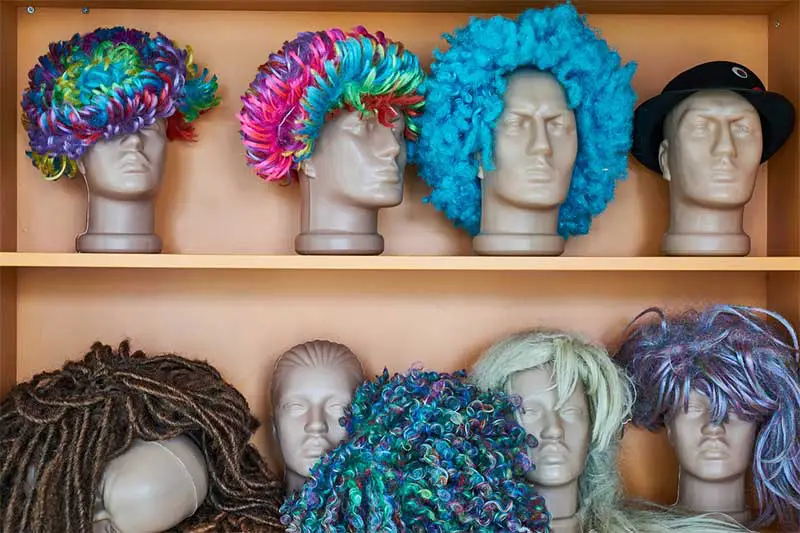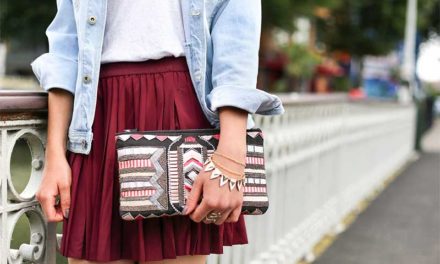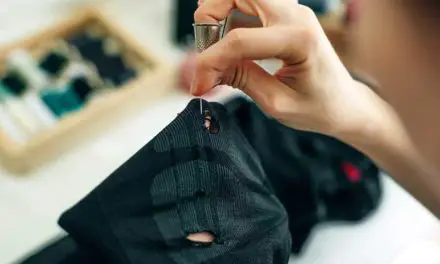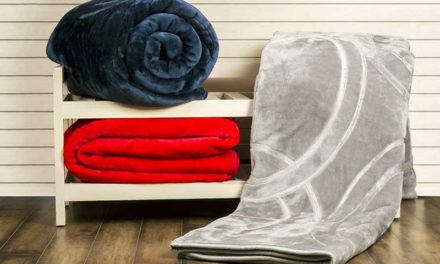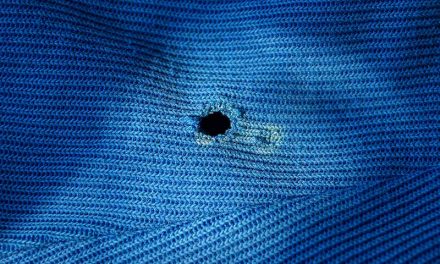When wearing a wig, you can either sew it into place or glue it on. Although it is much less time consuming to glue a wig, your wig will only stay in play for an entire day. On the other hand, by sewing your wig into place using thread and a weaving needle, you’ll be able to wear it for a week or even more.
Sew-in wigs will not only enhance your looks. Likewise, it can protect your natural hair since you’ll be giving it a bit of a break from the negative effects of styling. You can go to a salon and have a professional stylist sew-in your wig.
However, the average cost to sew in a wig can set you back between $150 to $300. In some cases, you have to pay more if you want to receive the best possible service. Fortunately, you can easily do it at home by following these tips on how to sew down a wig.
Table of Contents
Prepare Your Hair And Wig
Choose a lace wig
If you want to achieve the most realistic looking result, opt for a lace wig. This type of wig has a sheer cap, allowing parts of your scalp to show through your wig when you part your hair. Moreover, it allows for the blending of the wig to your natural hair.
Braid your hair
Your hair needs to be in various tight braids on your head to sew in your wig. You can do it yourself or ask someone to help you out, ensuring that your braid is similar to beehive braids or cornrows.
Here are some things to keep in mind when braiding your hair:
- If you have long hair, you may need to use bobby pins to secure some of your braids to prevent them from showing outside the wig.
- To achieve a more natural look, consider leaving a thin strip of loose hair around your hairline. But make sure the rest of your hair is braided.
Try on your wig
Put your wig on how you want to wear it. Make sure its edges line up with your natural hairline and covering all your braids.
Use clips to hold your wig as you sew
This is optional but very helpful at ensuring you’re sewing your wig in the right place. Clips can also help keep your wig out of the way when you’re sewing it, especially if using a long hair wig.
If necessary, cut the lace to match your natural hairline
Check to see for any areas where the lace is extending far beyond your natural hairline and cut these spots.
Thread hair weaving needle with a weave thread
A hair weave needle is curved and slightly blunt. Meanwhile, a weave thread is thicker in comparison to a regular sewing thread. Thread the weaving needle with around 18 inches or 46 cm of thread, then tie a knot on its end.
Sew Your Wig At Strategic Areas
Part your wig just behind your ears and going up above your head
It is advisable to start seaming across your wig right behind your ears. Then, extend up and over the top of your head’s back part. You can use either your fingers or a comb to part your wig.
Sew into your braids from ear to ear
Insert the weave needle into the wig and through your braid underneath. Be mindful when doing this so that you won’t sew down too far. The last thing you want is for the needle to pierce your scalp. Sew in a straight line going from one ear to the other, ensuring that the stitches are at least half an inch apart.
Sew into your hair in front of your ears
Next, sew your wig hair in front of your ears just near your temples. The natural hairlines of most people come to a point in this part. Sew near the edges of your wig in this section to secure this section of your wig in place.
Part your wig where you don’t usually part it and sew
The last area for you to sew is where you will not part your wig often. Locate some portions where your hair using your fingers or comb, and then sew across these parts. Doing so will hide the seam while ensuring that your wig is still secure over the top of your head.
Cut and tie the weave thread when you’re done sewing
Once you’re done sewing your wig hair into place, cut the weave thread from your needle and tie it into a knot. Make sure to also cut any excess thread off from the knot.
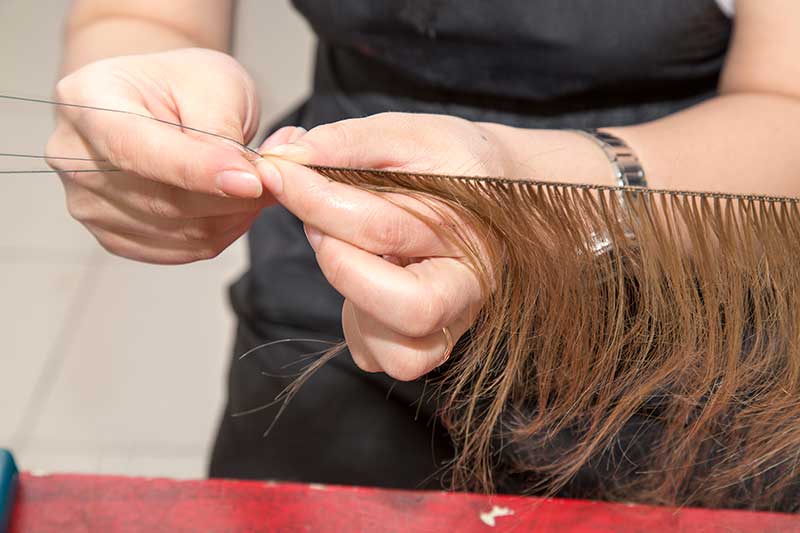
Does a sew-in wig ruins natural hair?
While a lot of people think that sew-ins damage natural hair, this is often not the case. Sew-in wigs can actually help your hair to grow. That’s because they will shield and protect your natural hair from styling tools and other environmental factors that can damage it.
Just make sure to wash your hair before sewing in. Also, when sewing, do not braid your natural hair too tightly. You don’t have to worry about your natural hair getting damaged when you keep these in mind.
Is it better to sew a wig than glue it?
Glue is also good since you’ll be able to perfectly form the wig into your face and head. But as mentioned above, it will only last for a day in comparison to sewing, which will last for a week or more.
How long can I keep my sewn-in wig?
Do not keep your sewn-in longer than two to three months. Wearing it for that long can protect your hair, but there’s a high chance for your hair to tangle, or worst, become matted.
Can I sew-in a full lace wig?
Full lace wigs are specifically designed to make them seem like they are growing right out of your scalp. There are various ways you can apply a full lace wig. However, the most common method that will last the longest is to sew it in.

